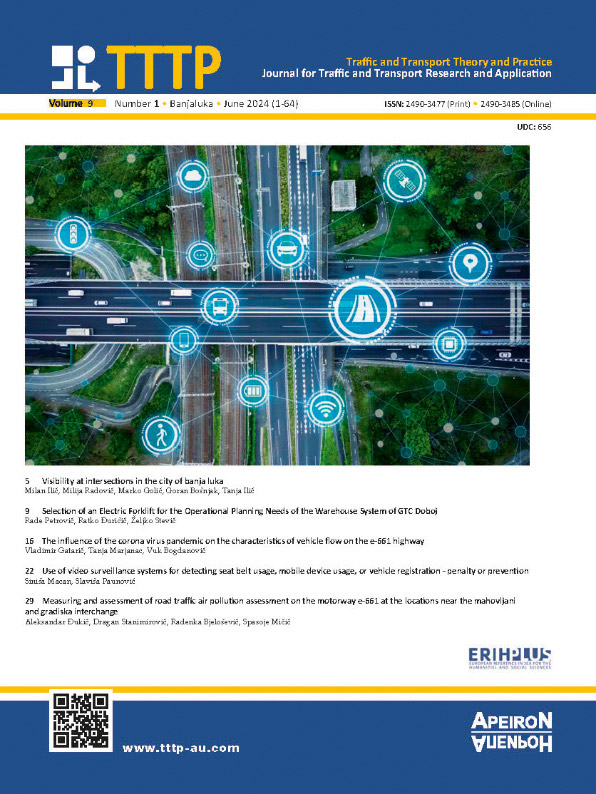The role of the BRT system in the function of sustainable public passenger transport
DOI:
https://doi.org/10.7251/JTTTP2401054GKeywords:
Bus rapid transit, sustainable transport, public passenger transport, mobilityAbstract
Bus rapid transit (BRT) is a system of public urban passenger transport (PUPT), based on the bus subsystem, designed to improve capacity and reliability compared to the classic bus system. Typically, a BRT system includes bus lanes and gives priority to buses at intersections where buses can interact with other traffic. Public transport is crucial to the future of a nation. Strengthens the economy, conserves energy and resources, reduces congestion, reduces global warming and improves air quality and health, critical emergency and disaster relief, increases real estate value and development, mobility in small urban and rural communities. As an instrument of transport policy, transport demand management measures generally do not require large material investments, which gives them additional attractiveness. The paper was conceived on the strategy of sustainable development of cities as a function of quality of life, and the basic characteristics of the BRT system and its role in urban mobility are presented in the work. Also, an insight into their potential is given based on past experiences of application in the world’s developed cities.
